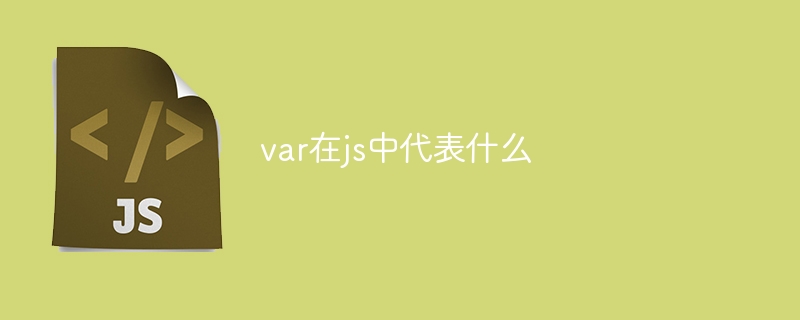Home >Web Front-end >JS Tutorial >What does var stand for in js
What does var stand for in js
- 下次还敢Original
- 2024-05-06 14:15:22669browse
Answer: The var keyword in JavaScript is used to declare and initialize variables. Detailed description: var declares a variable and associates it with a value, using an identifier as the variable name. The scope of var declaration is function level. Variables declared with var can be redeclared and reassigned inside a function.

The meaning of var in JavaScript
var is a keyword used to declare variables in JavaScript.
Detailed explanation:
The var keyword is used to declare a variable and associate it with a value. A variable name is an identifier used to refer to the value. For example:
<code>var myName = "John Doe";</code>
In this example, we declare a variable named myName and set its value to "John Doe". Once a variable is declared, it can be used anywhere in the program as long as it is within the scope of the declaration.
Scope:
The scope of var variables is function level. This means that the variable can only be accessed within the function in which it is declared. If an undeclared variable is referenced outside a function, an error is thrown. For example:
<code>function myFunction() {
var x = 10;
}
console.log(x); // ReferenceError: x is not defined</code>
Redeclaration and assignment:
Variables declared using var can be redeclared and reassigned. For example:
<code>var myName = "John Doe"; myName = "Jane Doe";</code>
In this example, we first declare a myName variable and then reassign its value to "Jane Doe".
let and const
In ES6, the let and const keywords were introduced, which provide a more modern and flexible way to declare variables. In general, it is recommended to use let and const instead of var as it provides better scoping control and error handling.
The above is the detailed content of What does var stand for in js. For more information, please follow other related articles on the PHP Chinese website!

